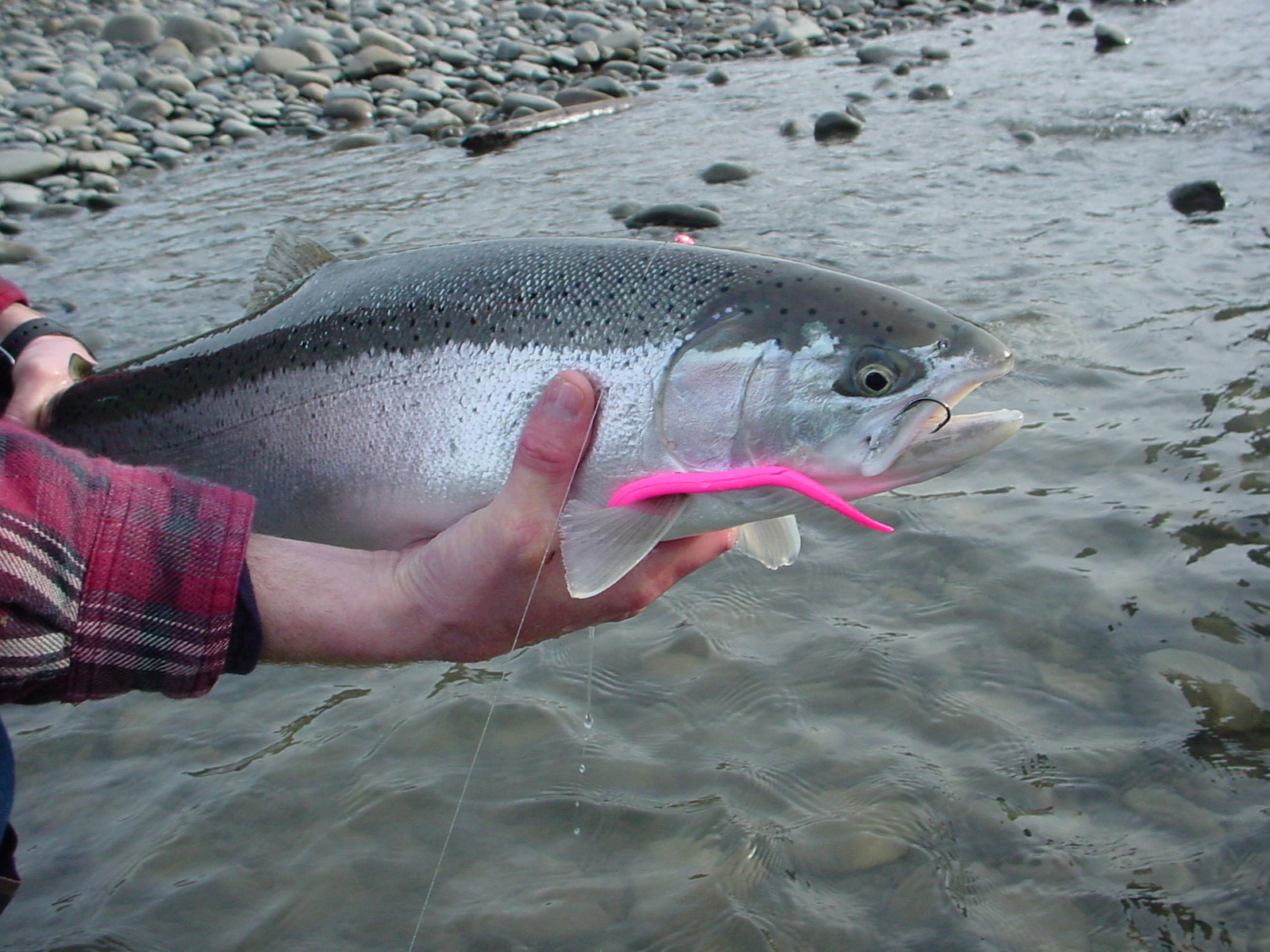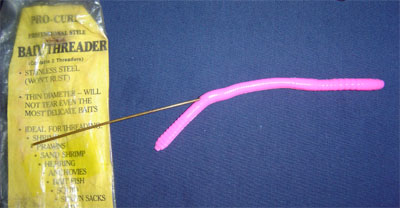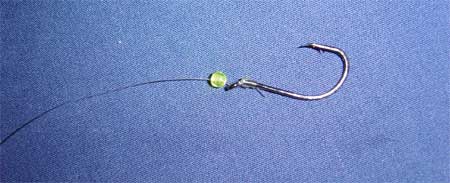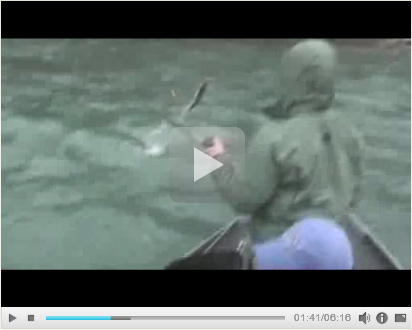Winter Steelhead with Count Wormula 6
Pink rubber worms have been dubbed "Count Wormula" in my boat because they flat out hammer steelhead in medium to high water on Washington's westside rivers. I first used one of these gifts from our Canadian steelheading brethren, who have been using them for years, in 1996 on the Skagit River. After plugging a run that I knew held fish without so much as a sniff I rowed the driftboat back to the top of the run and tossed over a bait diver rigged with a 6 inch bubblegum pink worm 5 feet behind it.
Washington's westside rivers. I first used one of these gifts from our Canadian steelheading brethren, who have been using them for years, in 1996 on the Skagit River. After plugging a run that I knew held fish without so much as a sniff I rowed the driftboat back to the top of the run and tossed over a bait diver rigged with a 6 inch bubblegum pink worm 5 feet behind it.
The worm was a floater and I used a pink and white Spin'n Glow on the leader to keep it out of the rocks and give it some action. The "you've got to be kidding me" look my customers were giving me vanished as rapidly as it took the black Hot'n Tot diver to reach the bottom. I couldn't even get the anchor pulled before a fourteen pound wild buck with a serious pink worm fetish inhaled Count Wormula and went schizo. We landed that fish and several others that day and the next day I returned with float rods all rigged up with Count Wormula's. Hammertime baby!
Count Wormula has been a mainstay in my boat ever since, especially when I'm targetting wild steelhead on coastal rivers or streams. Hatchery steelhead will hit the worm under the right conditions, of course, but they just don't seem to have the instinctive "kill wormy" response that wild steelhead possess. Throw an earthworm in a pool full of wild steelhead smolts and you'll see what I'm talking about. If they get the earthworm they survive another day in the wild, while the hatchery fish just waits for the next feeding session in the concrete pool.
Here's a video with some fun coastal steelhead footage along with a rigging tip for casting pink worms.
Pink worms come in two styles and, believe it or not, several different colors other than just reg'lar old pink. Sinking or neutral-bouyancy worms work excellent for floatfishing and bouyant, floating worms are the ticket for driftfishing or backtrolling behind a diver. A sinking worm can be used for driftfishing is you feel like tying up a lot of leaders every night.
Anglers have a way of cooking up all sorts of fantasy-land colors for Count Wormula, including green, orange, chartuese, red, black, and blue in hopes that they will continue to produce when the rivers drop and the water becomes clear. Sure, there are still times where steelhead will hammer a rubber worm in clear water, but those situations become more and more limited as the waters clear and why not just use a technique like jigs, side drifting, spoons, or plugs that really produce steelhead in low water? Adjust your technique to the water conditions.
The two colors of pink that have really produced for me over the years are bubblegum pink and either methiolate or hot pink. I'll use bubblegum when the water is just on the verge of being clear and the brighter colors in heavy flows and off-colored water. Keep these two colors rigged up, or keep it even more simple and just rig up a bunch of pre-tied leaders with just one shade of pink.
Another mistake I see anglers make is shifting to a 3 or 4 inch worm when the river clears hoping that they'll still get the same "kill wormy" bite they got on the larger 6 inch worms in heavy flows. Yeah, you'll get bit on a "here and there" basis but there are much more effective techniques to use in clear water and those small wormys just won't elicit that aggressive response like you'd think they would.
Here's the skinny on how to rig Count Wormula:
Insert a bait threader into the center of the worm approximately one quarter of the way up from the tail and carefully push the threader all the way thru worm, careful to keep the needle as close to the center of the plastic as possible. Needle style threaders work excellent for up to 10 pound test and pull-thru style threaders work for heavier pound test lines.

Snelll a bait hook and slide a bead onto the leader above the hook. The bead will keep the hook from ripping into the worm and increase its longevity.

Slide the leader thru the center of the needle or if using a pull-thru style needle insert several inches of leader into the hole in the end of the needle before pulling the line thru the worm.

Finished and ready to fish!

The next time one of the coastal rivers gets a shot of rain give one of these a try. In the right conditions they're darned near as effective as bait!
Rob Endsley



Wow. I got caught up in this post. I will for sure be coming back to this blog.
In delay there lies no plenty , Then come kiss me , sweet and twenty , Youth's a stuff that will not endure .
My favorite part of this post has to be word choice. Some people seem to have a way with words and you are one of them.
You seem to be fairly passionate about this subject. I appreciate when someone actually cares about what they are writing.
Do you know where I can find additional information on this?
Some great tips here Robbo!